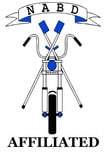From July motorcyclists as well as drivers must carry breathalyser in France
Posted on
From July motorcyclists as well as drivers must carry breathalyser in France
Latest advice from European motoring body the FIA says that drivers of all motor vehicles, including motorcyclists, will have to carry a breathalyser kit in their cars when travelling in France.
The IAM previously reported that from 1 July this year all drivers would need to carry a breathalyser kit, as French drivers will have to, but new information dictates that this €11 fine is applicable to all road users including motorcyclists, but excluding mopeds.
With a start date for the new measure of 1 July 2012, the rules will apply to anyone travelling to or through France by motor vehicle in the summer holiday season, even just for a day trip. This measure won’t actually be enforced until the 1 November 2012, giving road users time to prepare for the change.
Single-use breathalyser kits will satisfy the requirement. The legal limit in France is 50 mg per 100 ml of blood, lower than in the UK (the UK limit is 80mg). They cost between £1 and £2 and they will be available at ferry and tunnel terminals for crossings to France. It is intended that people will be able to test themselves to check whether or not they are over the French limit.
The IAM is advising all road users travelling in France to have at least two breathalysers at all times, so that if one is used you still have one to produce for the police if you are stopped.
Anyone driving in France is already required to carry a warning triangle and a fluorescent safety vest to use in an emergency. Motorcyclists should carry extra bulbs. Additionally UK motorists and motorcyclists must display a GB plate, and cars should have their headlights adjusted to the right.
IAM director of policy and research Neil Greig said: “The new French rule is a genuine attempt to reduce the number of alcohol related-accidents. France’s lower limit means it’s very easy to be over the limit the morning after as well. As always, the best advice for road users is not to drink and drive at all.”



